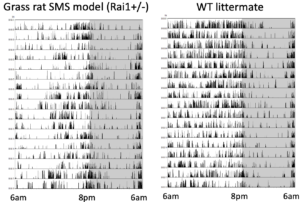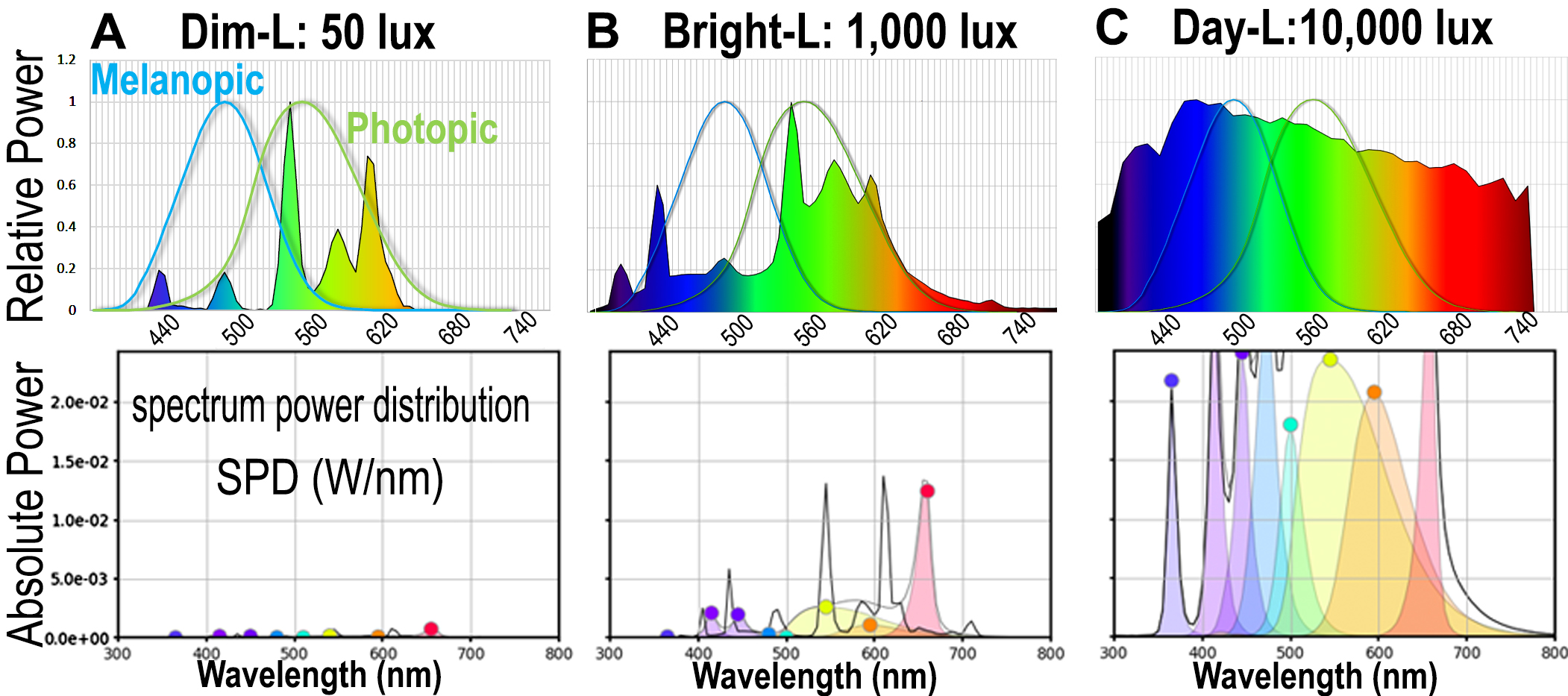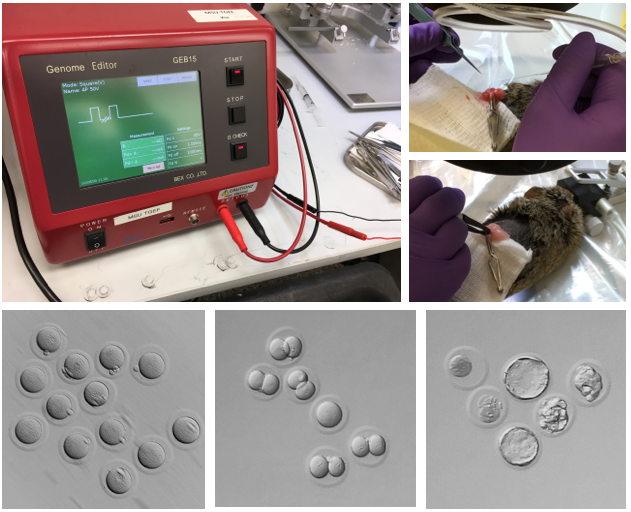Light and Mood  The effects of light on mood is best exemplified by Seasonal affective disorder (SAD), a major depressive disorder characterized by recurring episodes of depression and anxiety in the winter. Empirical evidence suggests that the symptoms of SAD are caused by insufficient light exposure during the winter months, but how changes in environmental lighting conditions lead to fluctuations in affective state remains largely unknown. To fill in this gap, we have developed a diurnal rodent model to elucidate the neural mechanisms through which light modulate emotional process (funded by NIMH).
The effects of light on mood is best exemplified by Seasonal affective disorder (SAD), a major depressive disorder characterized by recurring episodes of depression and anxiety in the winter. Empirical evidence suggests that the symptoms of SAD are caused by insufficient light exposure during the winter months, but how changes in environmental lighting conditions lead to fluctuations in affective state remains largely unknown. To fill in this gap, we have developed a diurnal rodent model to elucidate the neural mechanisms through which light modulate emotional process (funded by NIMH).
Light and Cognition  Light is also a modulator for cognitive functions. For example, brighter illumination facilitates math and reading skills of children, and the performance of adults in cognitive tasks. Bright light therapy also improves cognition in mild/early-stage dementia. The other line of my research is to understand the neural mechanisms through which light modulates cognition, specifically, hippocampal-dependent spatial learning (NINDS).
Light is also a modulator for cognitive functions. For example, brighter illumination facilitates math and reading skills of children, and the performance of adults in cognitive tasks. Bright light therapy also improves cognition in mild/early-stage dementia. The other line of my research is to understand the neural mechanisms through which light modulates cognition, specifically, hippocampal-dependent spatial learning (NINDS).
An animal model of Smith-Magenis Syndrome (SMS)  SMS is a neurodevelopmental disorder characterized by intellectual disability, physical health problems, and behavioral problems . One of the key features in SMS is circadian rhythm disruption, such that the patients have inverted melatonin rhythm and sleep/wake rhythm disturbance. Several SMS models have been generated using nocturnal laboratory mice, which do not recapitulate the phenotype in rhythm and sleep. We have developed a diurnal SMS model (Rai1+/-) which will allow a mechanistic understanding of sleep problems in this neurodevelopmental disorder and provide a platform to test potential treatments (NINDS).
SMS is a neurodevelopmental disorder characterized by intellectual disability, physical health problems, and behavioral problems . One of the key features in SMS is circadian rhythm disruption, such that the patients have inverted melatonin rhythm and sleep/wake rhythm disturbance. Several SMS models have been generated using nocturnal laboratory mice, which do not recapitulate the phenotype in rhythm and sleep. We have developed a diurnal SMS model (Rai1+/-) which will allow a mechanistic understanding of sleep problems in this neurodevelopmental disorder and provide a platform to test potential treatments (NINDS).

